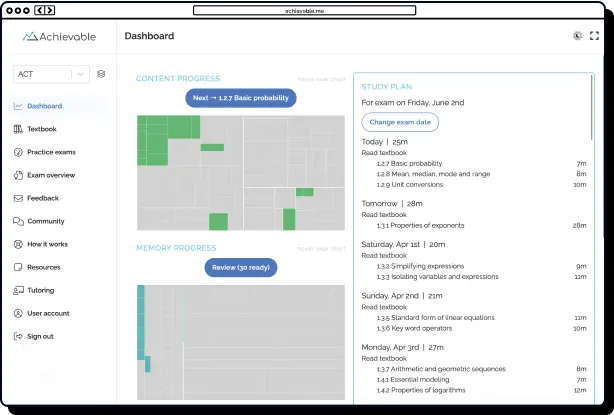
How much do physical therapists make? Your physical therapy jobs guide




Table of contents
- National average salaries
- Highest paying states for PTs and PTAs
- Top 5 highest paying states for physical therapists:
- Top 5 highest paying states for PTAs:
- How to become a PT or PTA
- To become a physical therapist (PT):
- To become a physical therapist assistant (PTA):
- How experience impacts salary
- Ways to increase your salary as a PT or PTA
- 1. Specialize
- 2. Earn additional certifications
- 3. Work in high-demand settings
- 4. Move into management or education
- 5. Geographic mobility
- Job outlook: A growing field
- Is physical therapy worth it?
- Conclusion
Physical Therapists (PTs) are licensed healthcare experts who help patients restore movement, manage pain, and recover after injuries or surgery. Through developing and executing personalized treatment plans, physical therapists utilize a range of therapeutic approaches such as manual therapy, customized exercises, and the latest rehabilitation equipment. Individuals seeking guidance on how to become a physical therapist will find PTs working in diverse settings, including hospitals, outpatient clinics, rehabilitation facilities, nursing homes, and patients’ homes.
Physical Therapist Assistants (PTAs) are vital members of any rehabilitation team. Working closely under the supervision of PTs, PTAs carry out specific parts of treatment plans, document patient progress, and deliver hands-on care throughout the rehabilitation process. While they play a critical support role in patient recovery, PTAs do not diagnose conditions or design treatment plans independently.

National average salaries
Average pay for physical therapists and physical therapist assistants, according to the U.S. Bureau of Labor Statistics (BLS), is as follows:
- Physical Therapist (PT) Salary:
In 2024, the average physical therapist salary in the U.S. was approximately $101,020 per year, which translates to about $48 per hour. This competitive pay reflects the advanced education and specialized training required to become a licensed PT.
- Physical Therapist Assistant (PTA) Salary:
PTAs earned an average annual wage of $65,510, or around $31.50 per hour. While physical therapist assistants play a vital supporting role in patient care, differences in education and responsibility are reflected in PTA compensation.
Highest paying states for PTs and PTAs
According to the most recent information from Indeed and Nurse.org, the highest pay states for physical therapists and physical therapist assistants were:
Top 5 highest paying states for physical therapists:

- California: $114,270
- Nevada: $111,460
- New Jersey: $110,830
- Alaska: $109,280
- Connecticut: $106,960
Top 5 highest paying states for PTAs:

- Washington: 75,260
- District of Columbia: 75,090
- New York: 72,698
- Massachusetts: 72,571
- Alaska: 71,562
Urban areas and coastal states tend to offer higher wages due to higher demand, but the cost of living is often higher as well.
How to become a PT or PTA
To become a physical therapist (PT):
- Earn a bachelor’s degree, usually in a science-related field, as the first step toward becoming a physical therapist. The degree you need to be a physical therapist often includes coursework in biology, anatomy, and physiology, which lays the foundation for advanced study.
- Complete a Doctor of Physical Therapy (DPT) program, which generally takes three years and is required for those pursuing a career as a physical therapist. This program provides in-depth clinical training and prepares students for the challenging aspects of the profession, highlighting how hard it is to become a physical therapist.
- Successfully pass the National Physical Therapy Examination (NPTE), a critical component on the path to becoming a licensed physical therapist.
- Obtain a state license, as requirements can vary slightly depending on where you plan to practice. Understanding how long it takes to become a physical therapist is important; from starting your undergraduate education to earning a DPT and securing licensure, the process typically spans about seven years.
These essential steps provide a clear path for individuals interested in becoming physical therapists or exploring becoming physical therapist assistants, as each role requires targeted education and certification.
To become a physical therapist assistant (PTA):
- Earn an associate’s degree from a CAPTE-accredited Physical Therapist Assistant (PTA) program (typically about 2 years)
- Pass the NPTE for PTAs
- Obtain a state license
For those interested in how to become a physical therapist assistant, this route generally requires less time and financial commitment compared to becoming a physical therapist. Completing a CAPTE-accredited associate’s degree prepares you to take the NPTE-PTA, which is an essential step for licensure. Because the educational path is shorter, individuals can enter the physical therapy field more quickly, often in around two years, making this option appealing for anyone seeking a faster entry into the profession.
How experience impacts salary
As with many professions, experience is a key factor influencing physical therapist salary growth over time. Here’s a general breakdown of average physical therapist salary ranges at different career stages:
- Entry-level (0 - 2 years): $75,000 - $85,000
- Mid-career (3 - 10 years): $90,000 - $105,000
- Experienced (10+ years): $110,000 - $130,000+
For those considering a physical therapist assistant salary, compensation also increases with experience:
- Entry-level: $50,000 - $55,000
- Mid-career: $60,000 - $65,000
- Experienced: $65,000 - $75,000
Both physical therapist salary and physical therapist assistant salary can vary based on factors such as geographic location, workplace setting, and additional certifications. As you gain more experience in the field, your earning potential as a PT or PTA typically grows accordingly.

Ways to increase your salary as a PT or PTA
1. Specialize
PTs can boost their NPTE credentials and earning potential by becoming board-certified clinical specialists in areas such as:
Pursuing these specialized certifications after passing the NPTE typically involves additional coursework, hands-on experience, and successfully completing a rigorous exam. Achieving board certification as a PT specialist can significantly enhance your salary, sometimes increasing your income by 25% to 40%. These advanced career paths not only leverage your NPTE success but also position you for greater professional growth and recognition.
2. Earn additional certifications
For PTAs who have passed the NPTE, obtaining certifications such as:
can enhance your NPTE credentials, make you more marketable, and potentially increase your wages.
3. Work in high-demand settings
- Home healthcare and skilled nursing facilities (SNFs) often pay more than outpatient clinics.
- Rural or underserved areas may offer loan forgiveness or bonuses.
4. Move into management or education
Becoming a clinic director, rehab manager, or physical therapy professor can boost income substantially.
5. Geographic mobility
Relocating to a higher-paying state or metro area can instantly raise your income, though be sure to consider the cost of living.
Job outlook: A growing field
Physical therapy is an expanding career field with strong job prospects and competitive physical therapist salary potential. The BLS projects employment for physical therapists to increase by 14% from 2023 to 2033, a rate much faster than average for all occupations. This significant growth reflects both the demand for skilled rehabilitation services and the increasingly aging population.
On the support side, Physical Therapist Assistants (PTAs) are expected to see 19% growth over the next decade, positioning this role as one of the fastest-growing in healthcare support. Both physical therapists and PTAs benefit from a healthcare landscape that’s in need of their specialized skills and knowledge.
Is physical therapy worth it?
- PTs invest heavily in education (often exceeding $100,000 in student loans), but their high earning potential, excellent job security, and strong job satisfaction often make the investment worthwhile.
- PTAs face a lower educational barrier and can enter the workforce quickly. The physical therapist assistant salary is competitive, with strong salary potential and increasing demand across healthcare settings.

Conclusion
Whether you choose to become a PT or pursue a career as a PTA, both jobs in physical therapy offer meaningful work, outstanding job security, and attractive compensation, especially for those who specialize or work in high-demand areas. With continued growth in the healthcare industry, the physical therapy field provides rewarding opportunities.

